University of Washington Medical Center
Ankrom Moisan‘s design of the University of Washington Medical Center’s 6N and 7N units prioritizes comfort and functionality with flexible patient rooms, biophilic elements, and isolation capabilities for future pandemic readiness.
Dedicated to the comfort and care of both mothers and their newborn babies, the UWMC 6N is an expansion of the University of Washington Medical Center’s (UWMC) existing mother-baby unit designed by Ankrom Moisan. Attached to yet separate from the rest of the unit, 6N lies in its own peninsula within the UWMC building. Away from the hustle and bustle of the rest of the hospital, the OB expansion provides high levels of direct, specialized care and monitoring, as well as extra privacy. Designed as a flexible space, the patient rooms in 6N can be used in different ways for recovering and expecting mothers, accommodating antepartum examinations and postpartum recovery care. The flexible use of the patient rooms supports different staffing models, depending on the type of care needed.
A focus on freshness in the front entry to UWMC 6N welcomes patients into the safety and support of the Natal Care Unit. The abundance of light from exterior windows and interior light fixtures marks the expanded wing as welcoming and approachable, a significant benefit for the patients who occupy the unit for extended periods while receiving care. Within patient rooms, a deliberate effort to embrace the feelings and aesthetics associated with hospitality spaces guarantees comfort while adhering to the existing UWMC design standards. Earth-tone finishes and wood-look headwalls bring moments of biophilia into each patient room, while wide windows provide exquisite views of the University of Washington’s campus below. Sleeper sofas, pendant lights, and repeated geometric patterns are among the deliberate design decisions that create moments that transform the patient rooms from clinical spaces into a home away from home. Durable finishes ensure that the rooms are easy to clean and built to last, without sacrificing an ounce of comfort.
Moving up to the next floor, occupying an entire wing of UWMC, Ankrom Moisan designed the 7N MedSurg unit to establish a surplus of essential patient rooms that can be utilized for all purposes. As a retrofit, Ankrom Moisan worked closely with the hospital to understand their need for a universal space. To have the most long-term flexibility in terms of programming, they utilized iterative thinking alongside the construction process to design 7N as a floor of catch-all rooms that support the most basic and general types of hospital care.
When entering 7N from the primary corridor, patients and staff alike are flanked by wood pilasters. Finishes and design standards cohesive with UWMC’s other inpatient floors brand 7N with a unified design aesthetic. Working with that standard palette, durable stretched fabric wall coverings are utilized to provide feelings of calm through acoustic dampening effects that reduce unwanted sound, an important consideration to support patients’ rest and recovery. Graphics and imagery tied to soft morning light, water droplets, and fog connect the space to the nearby Montlake Cut. An intentional effort to imbue the space with sensations of lightness and brightness prevents the feeling of being in an institutional setting, which was a big effort for the wing.
Since 7N does not share programming with other units, the floor was designed to stand alone as its own wing. Staff don’t have to leave the unit for support services, and there is a unique level of flexibility – mechanically and architecturally – on the floor that allows the unit to be easily converted to an isolation unit in preparation for a future pandemic or for highly contagious patient populations. Temporary walls can be erected at the unit’s entrance, cordoning off the space as a secure location for the immunocompromised or the infected in the event of another pandemic. An anteroom with a sink allows staff to put on the proper protective gear and disinfect themselves before and after entering the isolation unit, while a closed system of air circulation ensures there is no contamination between the quarantined wing and the rest of the floor.
Design: Ankrom Moisan
Photography: Moris Moreno

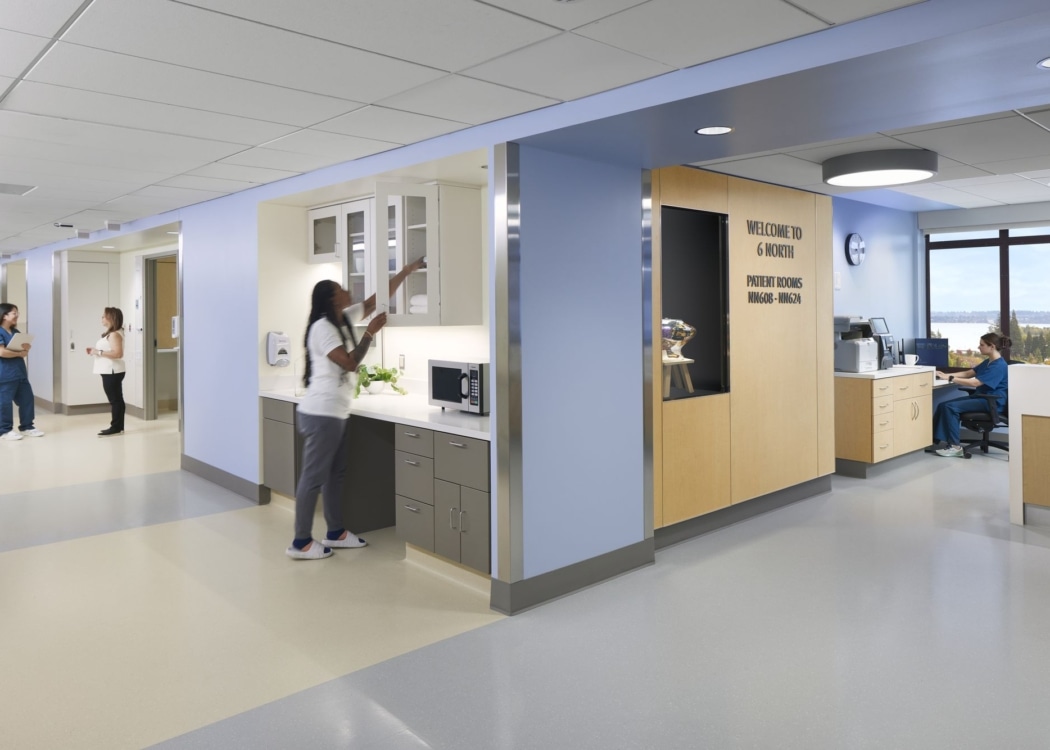

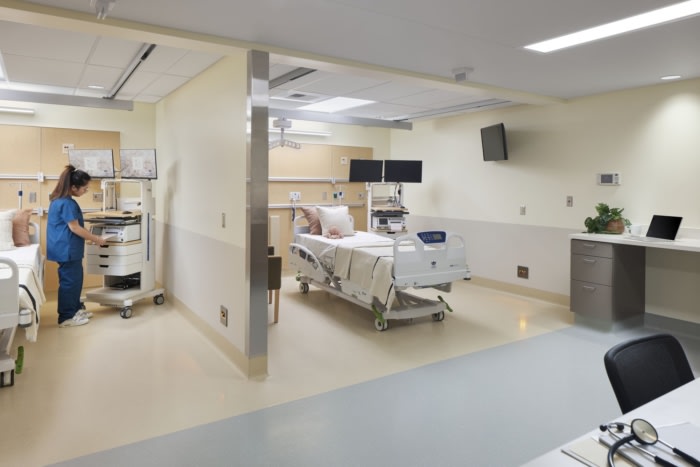
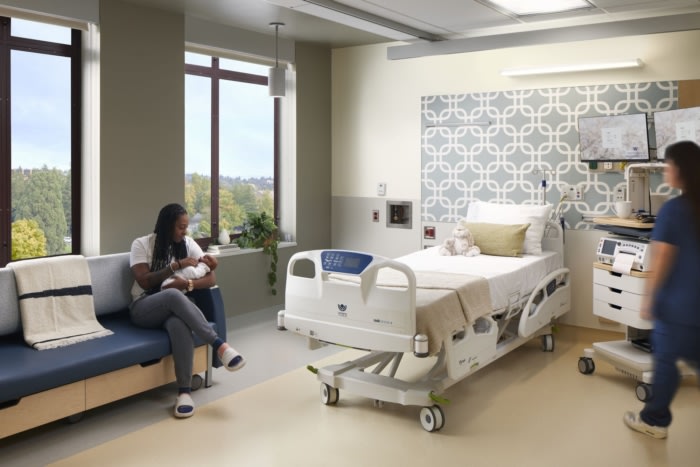

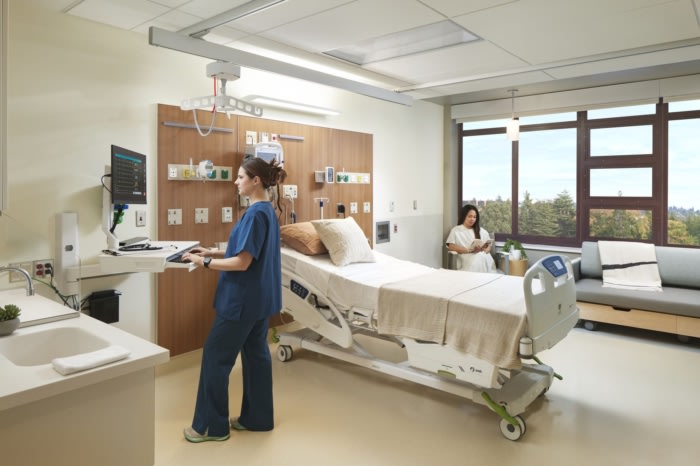

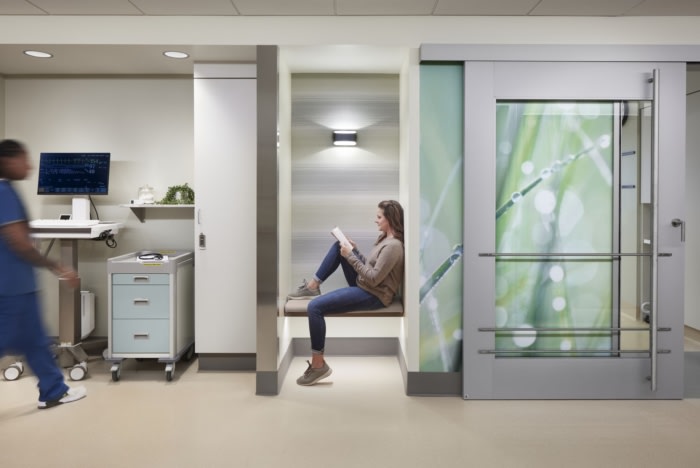

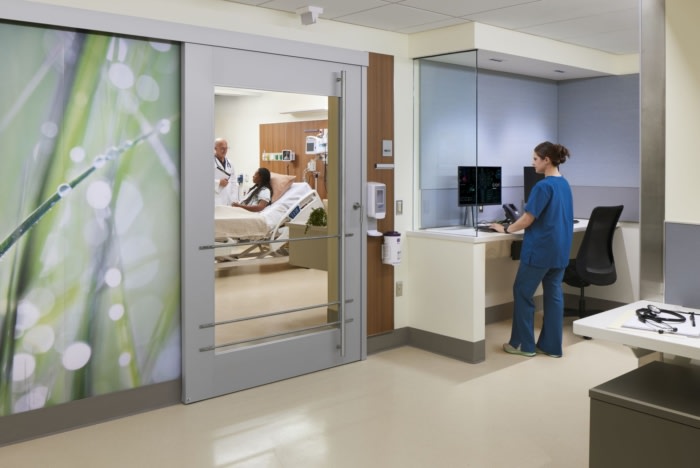













Now editing content for LinkedIn.